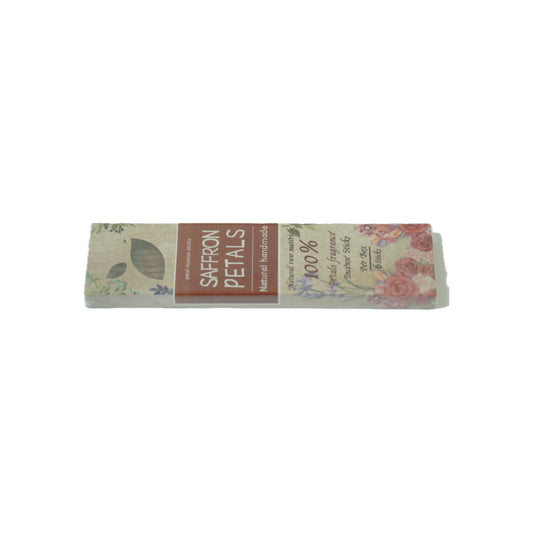Incense for Meditation and Wellness: Benefits, How to Use, and Types of Incense
Share

The comforting hug of scented smoke from a cone or stick holds within it the strength that existed prior to language.
From Egypt to China, incense has been burned for thousands of years to soothe the mind, cleanse environments, and facilitate connection with spirituality. From meditation sessions to wellness rituals at home, the art of burning incense transforms ordinary spaces into sanctuaries.
Whether you’re new to incense or a seasoned practitioner, understanding incense sticks, cones, incense burners, and the practice of burning incense can elevate your mindfulness journey.
What Is Incense? Understanding Its Meaning
Throughout human history, Incense is not just something that is burned but a gateway between the material and spiritual. According to Bedini (1994), incense is defined as a material that is burned to produce an odor, usually fragrant, and is also referred to as the perfume or fumigation itself that is produced from the burning of plant or other materials. These materials are carefully blended, forming sticks, cones, or resin lumps that release unique fragrances when burned.
- Incense Sticks: Most prevalent shape, typically with a bamboo core or without a core to get the most intense fragrance.
- Incense Cones: Pyramid-shaped, delivering a quicker, stronger scent.
- Resins: Oldest type, such as frankincense or myrrh, burnt on charcoal for heavy, ceremonial perfume.
Pro Tip: Select an incense type that will function in your meditation room and duration of your session.
The Benefits of Burning Incense for Meditation and Wellness
1. Improve Meditation Focus
Incense that is burned during meditation will be an anchor point, something that can quiet the mind. The ascending smoke is a sensory point of reference that makes you more receptive to incense zen or mindfulness more readily.
2. Purify and Elevate Your Space
Some aromas, like sandalwood or sage, have been employed for centuries to cleanse a space of negative energy. Both of these aromas can quietly impact the mood of a room.
3. Make Spiritual Practice Easier
Culturally, incense has served as a vehicle for prayer, intention, and ritual. Rising smoke is representative of spiritual desires, binding the earthly and sacred realms together.
4. Facilitate Relaxation and Wellness
Aromatherapy benefits transpire through naturally soothing smells such as lavender, chamomile, or jasmine. Incense burning may soothe tension, clarify concentration, and enhance your well-being experience.
How to Select and Use Incense
1. Selecting the Right Fragrance
- Best-smelling incense: Fragrances like Himalayan wood, sandalwood, jasmine, or citrus are popular for relaxation and inspiration.
- Think about the reason for burning incense: meditation, stress relief, or spiritual rites.
2. Selecting an Incense Burner
A good incense burner is a luxury for safety and beauty. You can use:
- Carved wooden trays
- Ceramic dishes
- Elaborate metal containers
3. How Many Sticks Should You Burn at Once?
Typically, one stick or cone is enough for a small room. Avoid overloading the space; based on Sure, personal communication, December 2, 2003:"...as soon as you move to offer the incense, it is already connected, and the Buddhas are not waiting for the smoke to curl up; they are waiting for the intent. So the incense becomes a vehicle."
4. How Often Should You Burn Incense?
There are no strict rules. Whenever you feel upset, burn incense; burn it daily as a ritual, or only when seeking mindfulness or cleansing energy. Listen to your intuition.
Types of Incense
| Type | Description |
|---|---|
| Sticks | Bamboo-core or coreless; long-lasting burn for meditation or rituals. |
| Cones | Quick and intense aroma; ideal for small spaces or short sessions. |
| Resins | Heated on charcoal; ceremonial, deep fragrances for spiritual practice. |
History and Culture of Incense
The art of Kōdō, the Japanese “Way of Incense,” treats fragrance as an art form. Across Asia, the Middle East, and beyond, incense has spiritual, cultural, and medicinal significance. From ancient temples to modern meditation rooms, incense continues to bridge tradition and mindfulness.
Tips for a Mindful Practice with Incense
- Always use a safe, stable burner.
- Choose fragrances that align with your mood and purpose.
- Practice mindful breathing as the scent fills the room.
- Keep the area ventilated while maintaining tranquility.
Explore our incense sticks and cones collection for high-quality, hand-selected scents.








